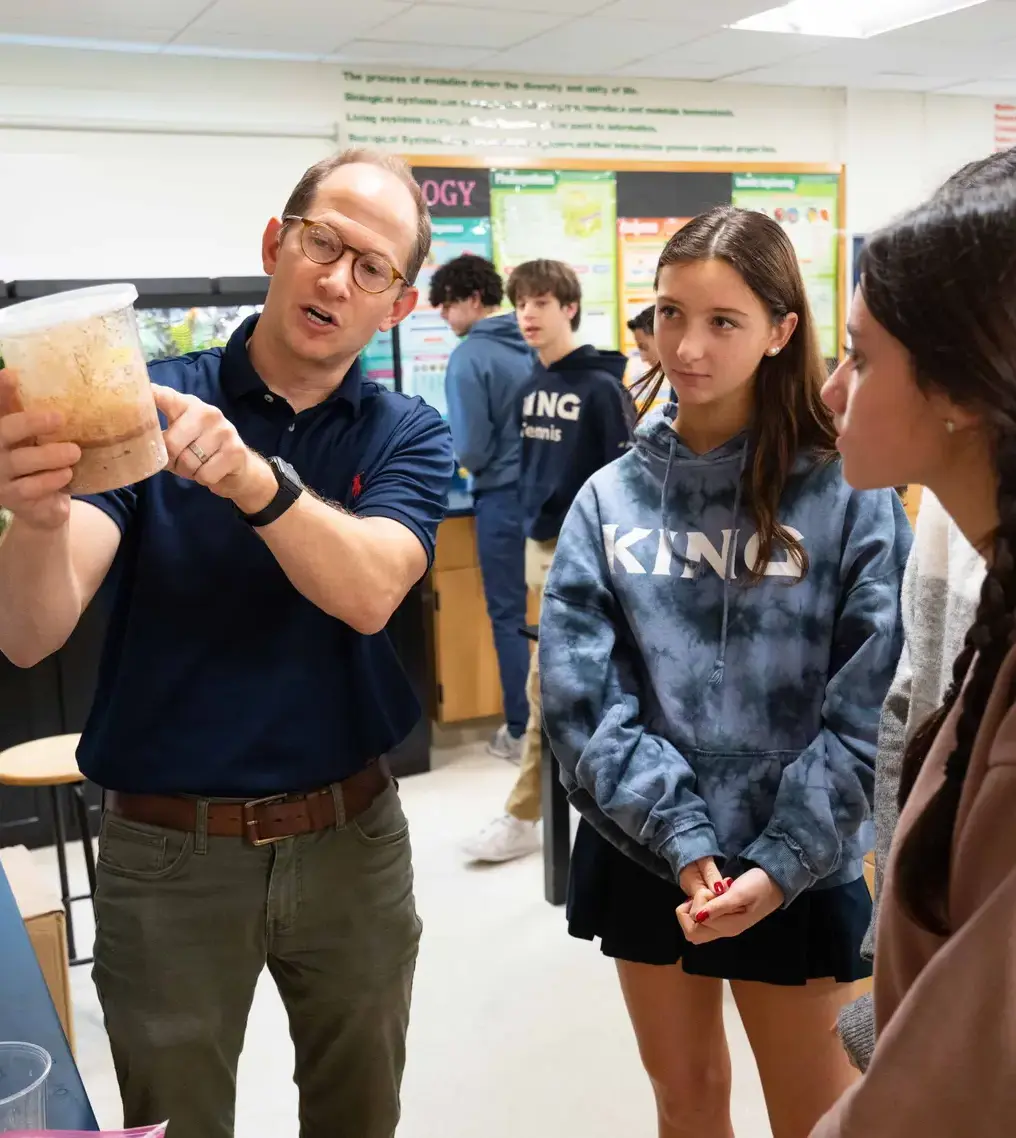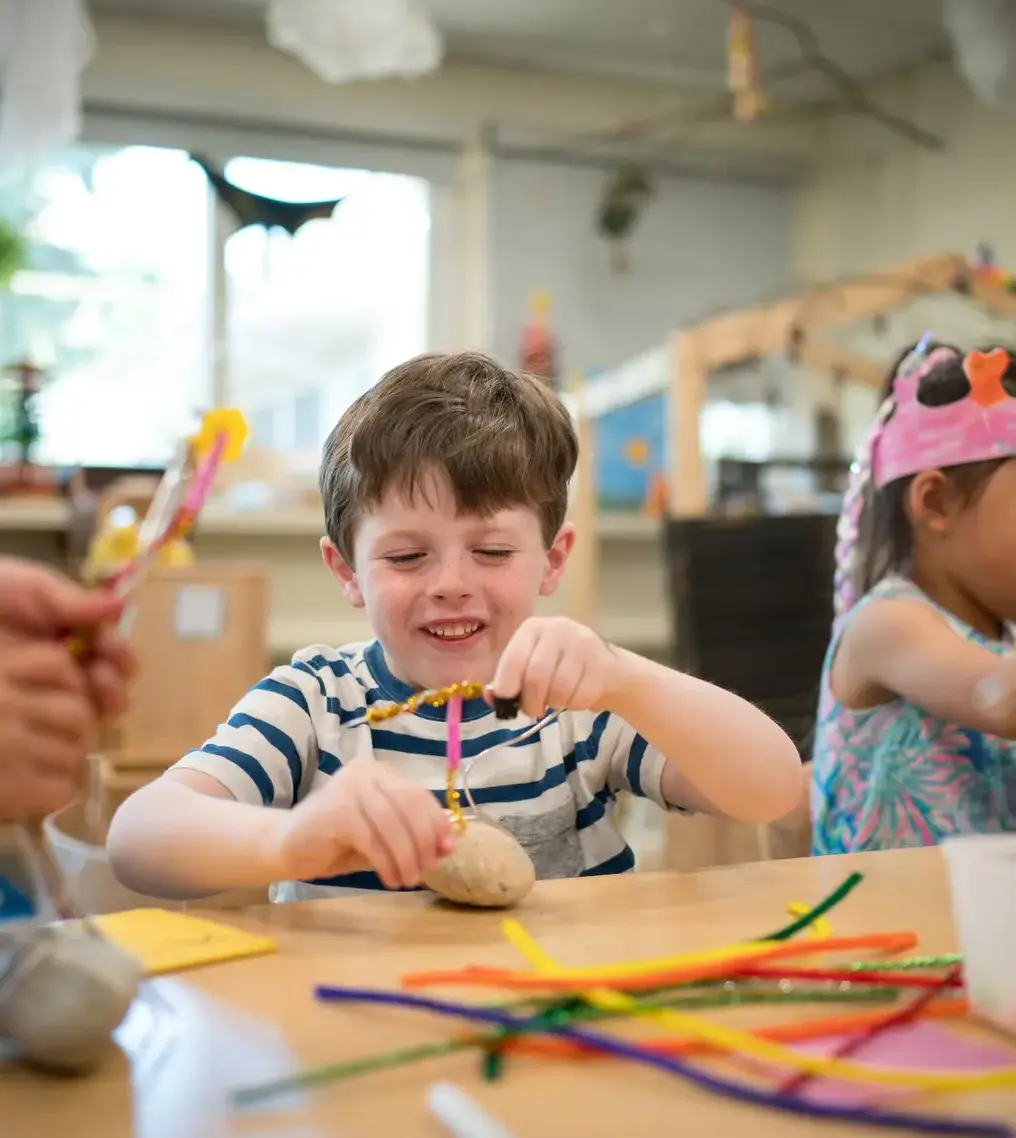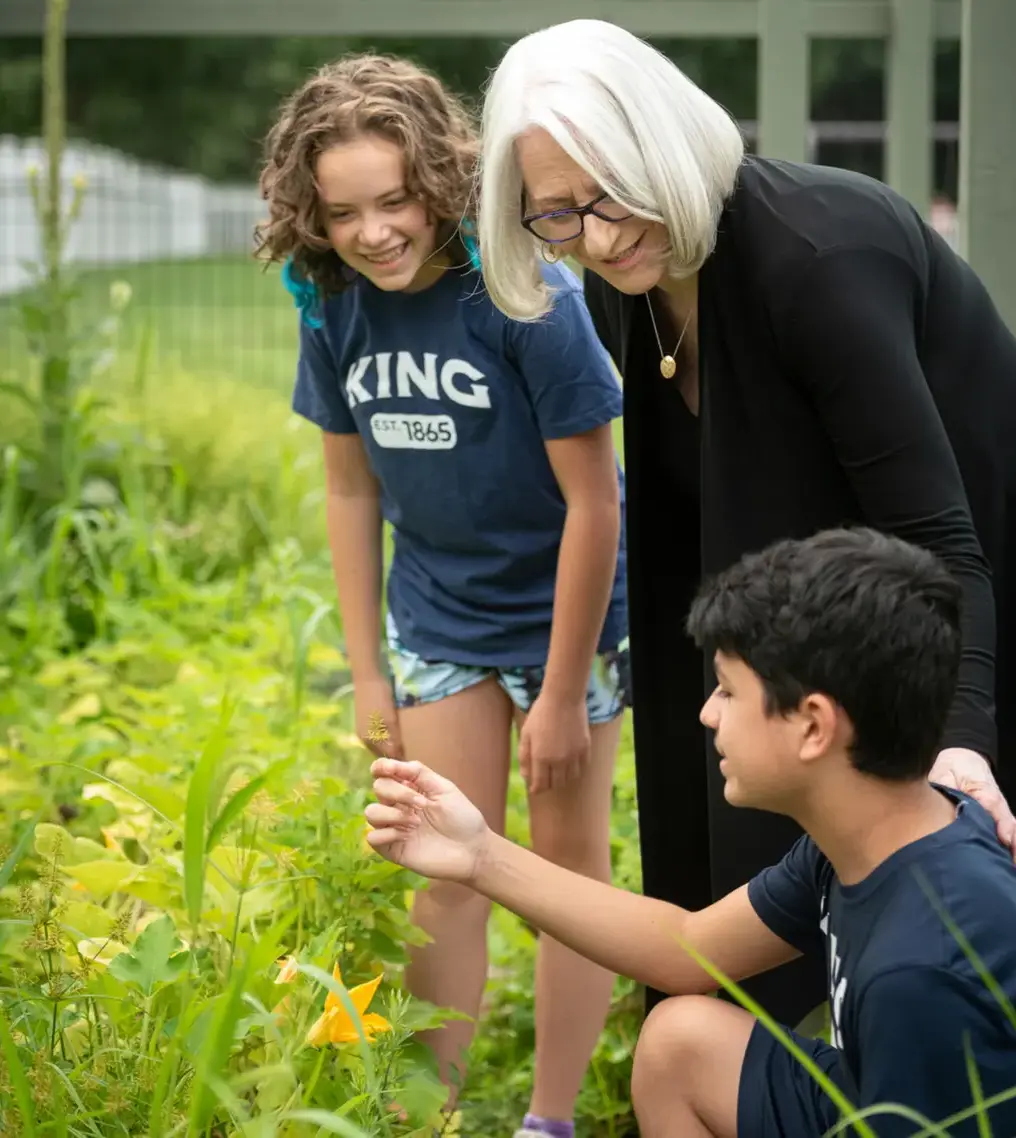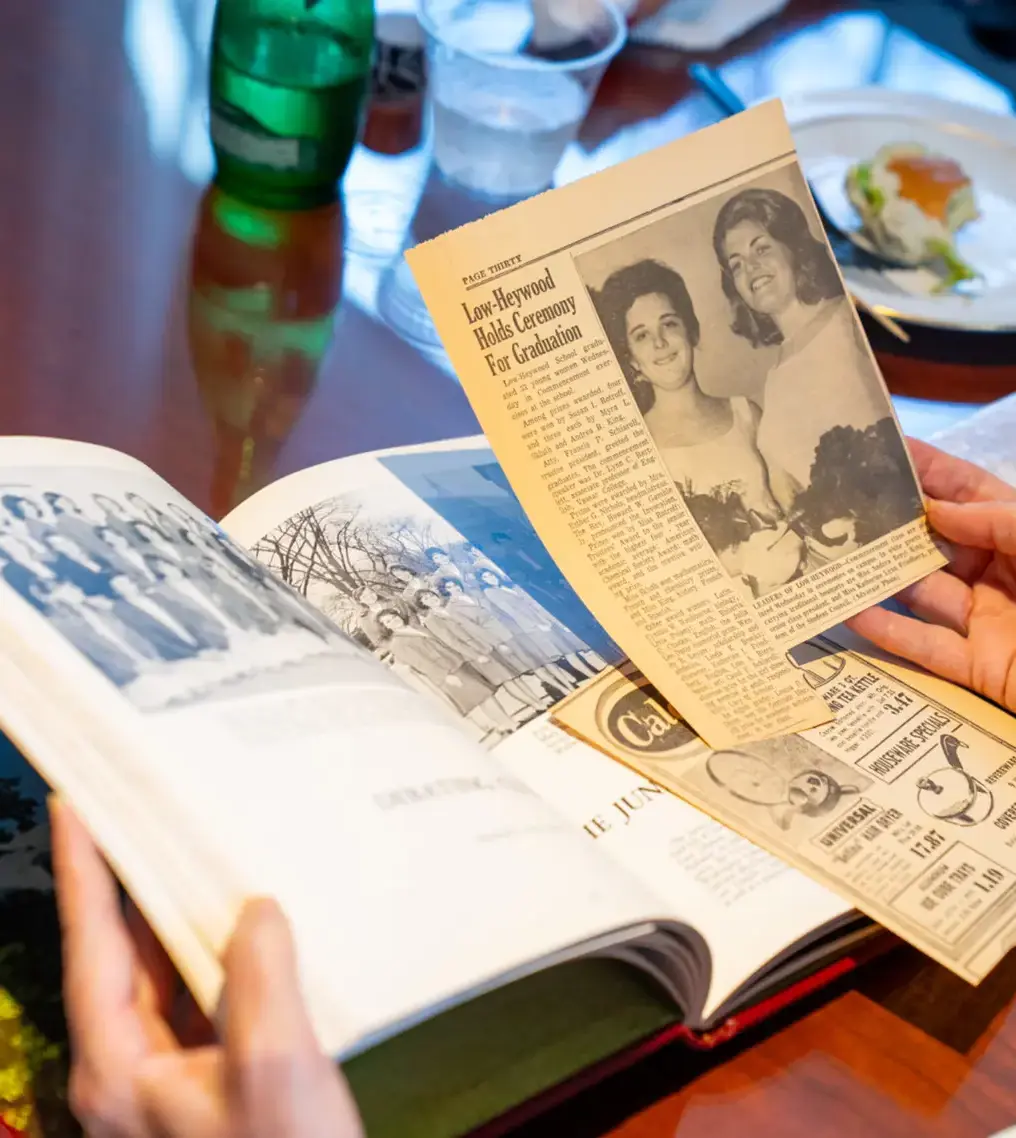“A Midsummer Night’s Dream” Blends Tradition and Tech
King School’s fall production of “A Midsummer Night’s Dream” marked the return of Shakespeare to the school’s stage and served as the debut King production for new performing arts teacher Andrew Wildman-Foster. Under his guidance, the students, both actors and tech crew members alike, drove the show’s ambition, from mastering Shakespeare’s language to safely lifting a performer ten feet above the stage.
“There’s a longstanding tradition at King of producing a Shakespeare play every four years, ensuring that every student has the chance to be part of a Shakespearean production during their time here,” Wildman-Foster said. “Midsummer felt like the right inaugural choice for me because its themes — identity, transformation, revenge, pity, anticipation, yearning, and peace — which speak directly to the age group.”
The production demanded rigor. Complex sequences, heightened language, and a large ensemble required patience and collaboration. Wildman-Foster said he watched students deepen their craft as they learned to balance instinct with technique.
“They’ve been refining their expressive tools, body, voice, imagination, cultivating habits of risk-taking and resilience, learning to combat self-consciousness with presence and spontaneity, and digging into Shakespeare’s rhythm, imagery, and heightened language,” he said.
This play also introduced new technical elements, including a major first for King: a student flying on a wire in a hammock. Managing that new effect fell largely to stage manager Teagan Robinson ’27, who was charged with overseeing a full theatrical production for the first time.
Following her behind-the-scenes work last year on “The Great Gatsby” and “Les Misérables,” Teagan fully embraced her central role, coordinating cues, scene shifts, and the backstage crew.
“Working out the lift took time; it's really important to keep in mind the safety because we are sending someone pretty high up in the air,” said Teagan. “We have to be really focused, and then it's all about communication.”
That communication web stretched across the entire theater, with cues called from the booth, scenery shifted in the wings, and lights monitored from the catwalk, creating a seamless network of voices and signals that worked together to keep the production running smoothly.
“We kind of have a little system where whoever's managing the hammock gives someone a nod backstage, and then that person will radio to me that we're ready to go, and I'll send it up,” Teagan said. “So we have like a clear process and team that works together to send the message through.”
This level of connection extends beyond logistics. Wildman-Foster said he has been struck by the community he found at King and how students support one another through the vulnerability of theater work.
“My biggest surprise has been this group of young artists and how genuinely supportive they are of one another,” he said. “When theater is really cookin’, it’s an extremely vulnerable space, one that can easily be poisoned by coolness or cruelty. I’ve seen none of that here.”
Beyond the stage, Wildman-Foster said the value of the experience extends deeply into students’ personal growth as they practice teamwork, problem-solving, time management, and the courage to step outside of their comfort zone.
“Theater is a non–zero-sum game,” he said. “There are no right answers, only possibilities — and wildly successful theater-makers often disagree on the 'best' way to do things. Life is a lot like that. I’m not sure how often young people get the opportunity in a school environment to wrestle with problems that have no single solution and so closely mirror the challenges of living a well-examined life.”









